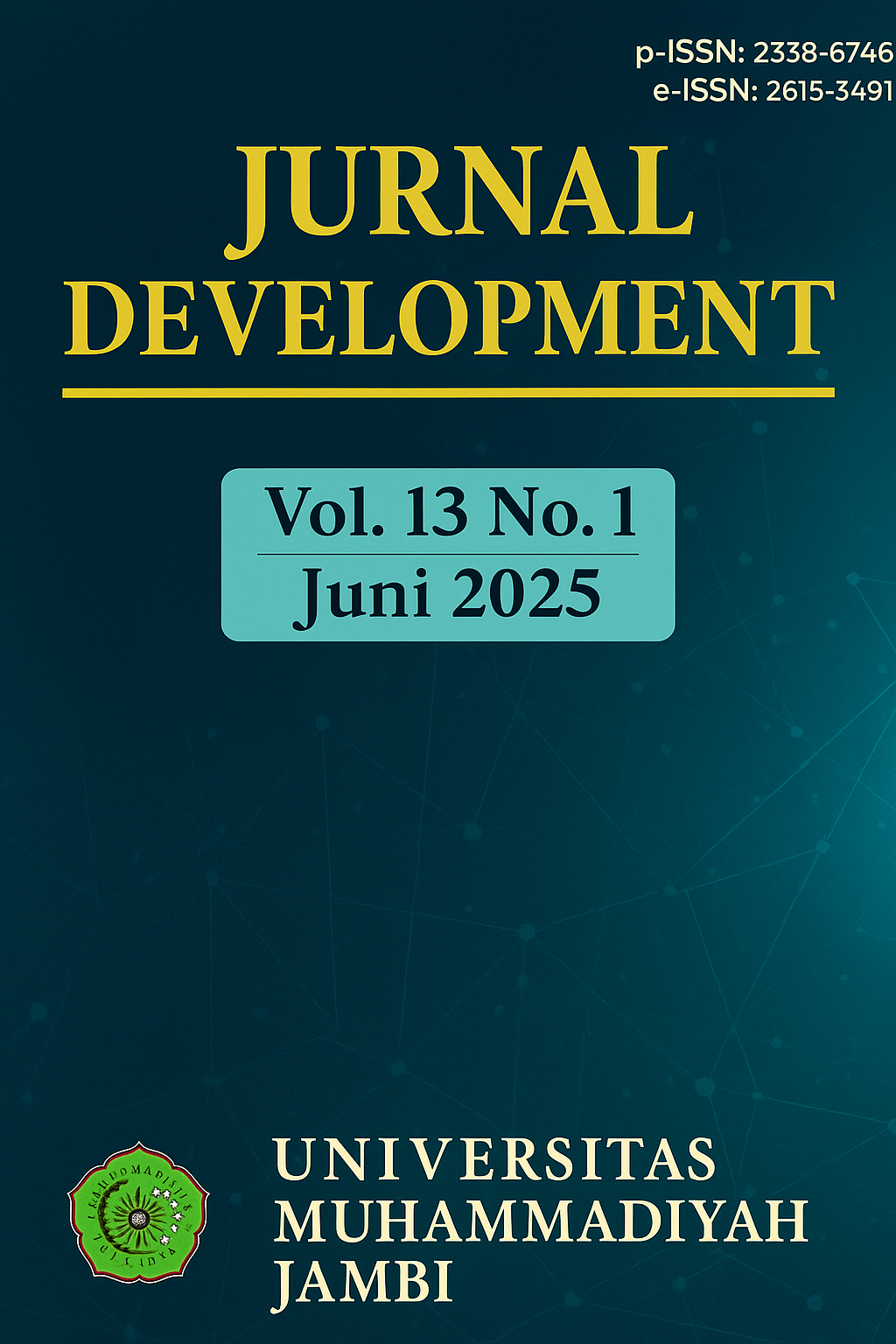BIBLIOMETRIC ANALYSIS STUDY OF DEMOGRAPHIC DIVIDEND ON INDONESIA ECONOMYC GROWTH: A TREATH OR AN OPPORTUNITY? A SYSTEMATIC LITERATURE REVIEW
Main Article Content
Abstract
The Demographic Dividend can influence the course of a country's economy. This literature aims to provide a view and recommendation on the existence of Demographic Dividend on Indonesia's economic growth, which is based on empirical information and actual conditions currently occurring in Indonesia. This literature used a Systematic Literature Review approach using 12 article references, which were then visualized and used data crawling with Bibliometric techniques on the VosViewer analysis tool. The results of the analysis showed that there was a strong relationship between Demographic Dividend and Economic Growth. The Demographic Dividend can be both an opportunity and a threat based on the level of skills and knowledge of the working-age population. The important factor in managing the Demographic Dividend were improving the quality of human resources through competency-based education, improving infrastructure, improving public facilities, structural reform, and managing the Demographic Dividend based on Environmental Sustainability. Therefore, the government needs to establish targeted regulations to take advantage of Demographic Dividend opportunities to increase economic growth in the future
Downloads
Article Details

This work is licensed under a Creative Commons Attribution 4.0 International License.
References
Amirusholihin, & Listiono. (2018). Demographic Bonus Analysis and Economic Growth of East Java. East Java Economic Journal, 2(1), 8–21. https://doi.org/10.53572/ejavec.v2i1.10
Anang, B. T., Alhassan, H., & Danso-Abbeam, G. (2020). Estimating technology adoption and technical efficiency in smallholder maize production: A double bootstrap DEA approach. Cogent Food and Agriculture, 6(1), 1–16. https://doi.org/10.1080/23311932.2020.1833421
Andriani, D., & Yustini, T. (2021). Anticipating the demographic bonus from the perspective of human capital in Indonesia. International Journal of Research in Business And Social Science, 10(6), 141–152.
Ariteja, S. (2017). Demographic Bonus for Indonesia: Challenges and Policy Implications of Promoting Universal Health Coverage. Jurnal Perencanaan Pembangunan: The Indonesian Journal of Development Planning, 1(3), 265–274. https://doi.org/10.36574/jpp.v1i3.24
Bahan, D., & Dramani, L. (2020). Demographic Dividend and Social Well-Being in Burkina Faso: Evidences from Household Living Conditions Surveys. International Journal of Applied Economics, Finance and Accounting, 6(1), 30–41. https://doi.org/10.33094/8.2017.2020.61.30.41
Berde, É., & Kurbanova, M. (2023). Does the demographic dividend with human capital development yield an economic dividend? Evidence from Central Asia. Post-Communist Economies, 35(2), 154–178. https://doi.org/10.1080/14631377.2022.2164782
Bloom, D. E., Kotschy, R., Prettner, K., Canning, D., & Schünemann, J. (2018). Health and Economic Growth: Reconciling the Micro and Macro Evidence. EconStor, 1–32. https://doi.org/10.2139/ssrn.4148203
BPS. (2023). Proyeksi penduduk Indonesia 2020-2050 : hasil sensus penduduk 2020.
Hadi, S., Tjahjono, H. K., & Palupi, M. (2020). Systematic Review : Meta Sintesis Untuk Riset Perilaku Organisasional. In VIVAVICTORY (pp. 1–197).
Hsu, Y.-H., & Lo, H.-C. (2019). The Impacts of Population Aging on Saving, Capital Formation, and Economic Growth. American Journal of Industrial and Business Management, 09(12), 2231–2249. https://doi.org/10.4236/ajibm.2019.912148
Jain, N., & Goli, S. (2022). Potential demographic dividend for India, 2001 to 2061: a macro-simulation projection using the spectrum model. SN Social Sciences, 2(171), 1–23. https://doi.org/10.1007/s43545-022-00462-0
Joe, W., Kumar, A., & Rajpal, S. (2018). Swimming against the tide: economic growth and demographic dividend in India. Asian Population Studies, 14(2), 211–227. https://doi.org/10.1080/17441730.2018.1446379
Kubitza, C., Krishna, V. V., Urban, K., Alamsyah, Z., & Qaim, M. (2018). Land Property Rights, Agricultural Intensification, and Deforestation in Indonesia. Ecological Economics, 147(1), 312–321. https://doi.org/10.1016/j.ecolecon.2018.01.021
Liyana, N. F. (2023). The Effect of Educational Inequality on Economic Growth in Indonesia. Jurnal Pajak Dan Keuangan Negara, 5(1), 144–153. https://doi.org/10.47175/rissj.v1i3.103
Moreland, R. S. (2017). Can Nigeria Attain a Demographic Dividend? African Population Studies, 31(1), 1–7. http://aps.journals.ac.za/pub/article/view/1002/762
Nguea, S. M. (2023). Demographic dividend and environmental sustainability: The mediation effects of economic growth, ICT, foreign direct investment, and urbanization. Next Sustainability, 2(1), 1–11. https://doi.org/10.1016/j.nxsust.2023.100005
Praditya, E., Suprapto, F. A., Ali, Y., Surjaatmadja, S., & Duarte, R. (2023). Nusantara Capital City (IKN): Threats and Defense Strategies for Indonesia’s New Capital. The Journal of Indonesia Sustainable Development Planning, 4(1), 21–34. https://doi.org/10.46456/jisdep.v4i1.420
Ramadanti, V., Salim, A., & Suhab, S. (2023). The Effect of Regional Government Expenditures on Regional Development Inequality in Eastern Indonesia, 2015-2020. Jambura Equilibrium Journal (JEJ), 5(1), 2023.
Santosa, H., Mutiara, E., & Juanita, J. (2017). An Understanding Demographic Bonus and Its Implication among Teenagers in Deli Serdang District. 1st Public Health International Conference, 1(1), 404–408. https://doi.org/10.2991/phico-16.2017.7
Tamboura, H., & Zahonogo, P. (2020). Demographic dividend and economic growth in West African Economic and Monetary Union (WAEMU). Journal of Aging and Innovation, 9(2), 126–145. https://doi.org/10.36957/jai.2182-696X.v9i3-7
Ulhaq, M. D., & Wahid, A. (2022). System Dynamics Modeling for Demographic Bonus Projection in Indonesia. IOP Conference Series: Earth and Environmental Science, 1039(1), 1–11. https://doi.org/10.1088/1755-1315/1039/1/012031
World Bank. (2023a). A World Bank Group Flagship Report: Global Economic Prospects.
World Bank. (2023b). World Bank national accounts data.
Young, A. O. (2019). Economic Growth and Demographic Dividend Nexus in Nigeria: A Vector Autoregressive (VAR) Approach. Asian Social Science, 15(2), 37–59. https://doi.org/10.5539/ass.v15n2p37

